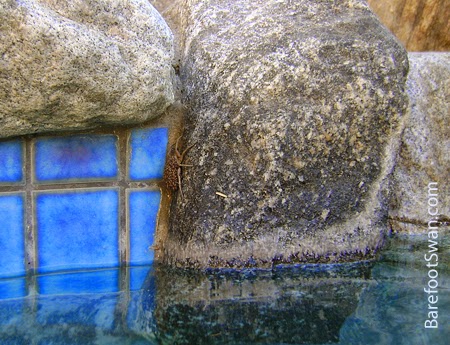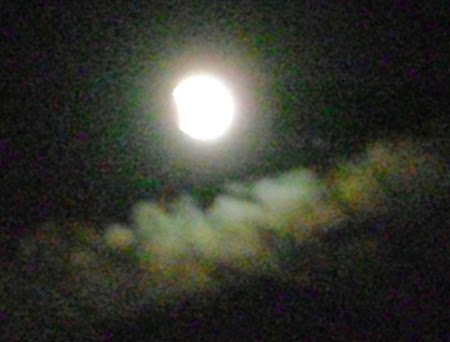I was taking advantage of the cool morning weather to do some weeding and clean up in the front yard. As I grabbed a handful of dead leaves from under a cactus, I felt something move in my gloved hand.
 |
| Palo Verde Root Borer Beetle |
Glancing down I saw I was holding what looked like the most ginormous cockroach in the world.
Startled, I dropped it.
As it lumbered off, I saw it wasn't a cockroach at all.
It was a Palo Verde Root Borer beetle.
These beetles are BIG - up to 3" long or more, not including the antennae. They have pinching mandibles that can give a nasty bite if handled. The thorax has spikes along the edges. This particular beetle was a dark reddish-brown but they can also be brown or black.
Palo Verde Root Borers have an interesting life cycle. After mating, the female lays her eggs in the soil near a palo verde or other host tree. The eggs hatch and the larva burrows into the roots of the nearby tree where it begins eating. Over the next 2-4 years, the creamy yellow-white larva will continue feeding underground on the roots of the tree, and then pupate.
The adult beetles normally hatch out after summer rains (we had a brief shower on Wednesday). They are clumsy fliers and may travel from their hatching area in search of a mate.
 |
Palo Verde Root Borer Beetle
|
Adults only live for about a month above ground.
During this time they do not eat, in spite of the impressive jaws. Those chompers are used for mating and fighting.
The beetle will die soon after mating.
In addition to Palo Verde trees, the Palo Verde Root Borer may also feed on olive trees, some cottonwoods, and citrus in some areas. These beetles should not be a threat to healthy trees, which can outgrow any damage the larvae may cause. The best defense is to make sure your trees are healthy by providing adequate water, and fertilizer as needed. You can also turn off exterior lights to avoid attracting adult insects.
Although they are formidable-looking, Palo Verde Root Borer beetles are eaten by roadrunners, coyotes and owls.
"When a blind beetle crawls over the surface of the globe, he doesn't realize that the track he has covered is curved. I was lucky enough to have spotted it."
~Albert Einstein


















































